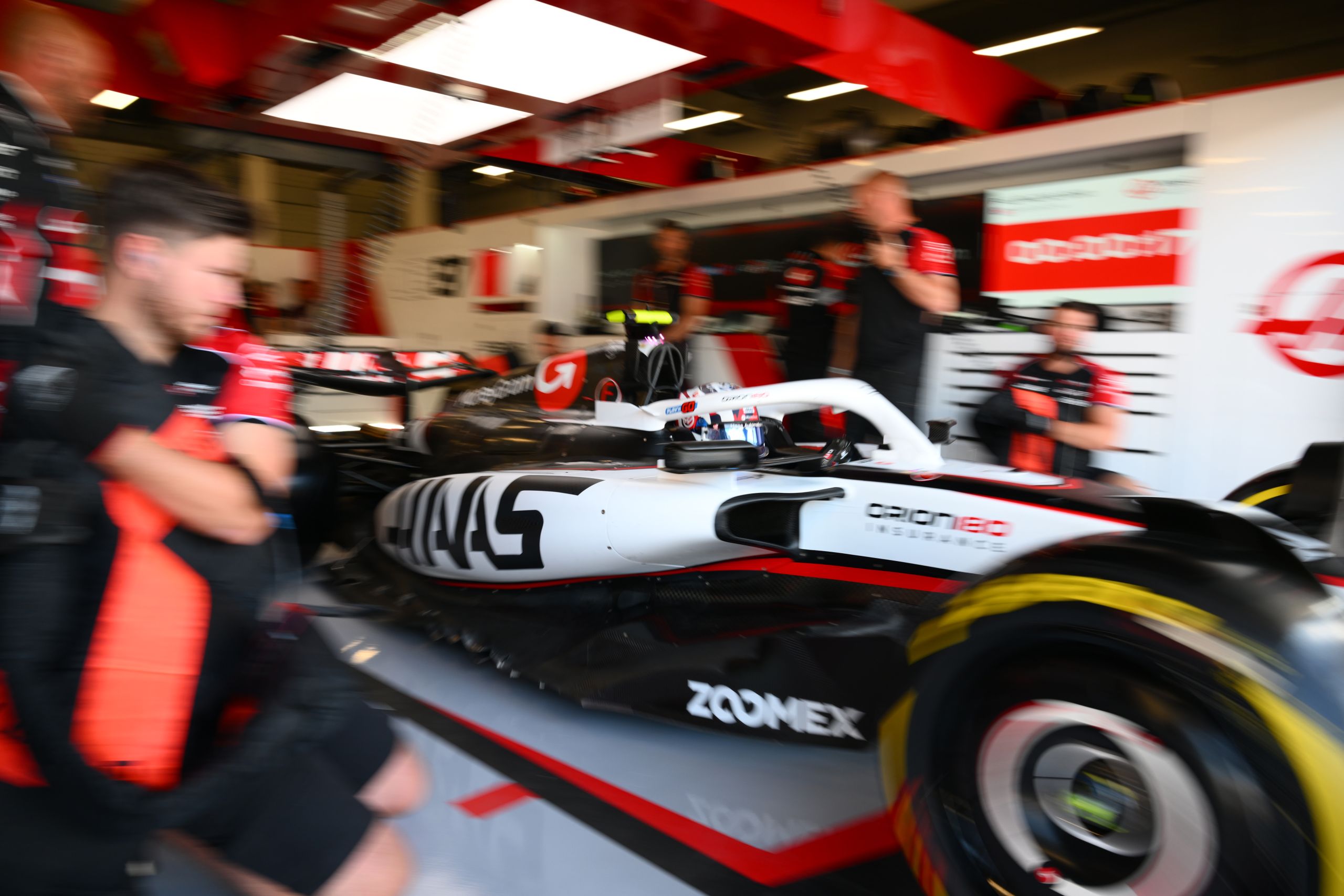What Makes More Money: NASCAR vs F1 Revenue Comparison


Formula 1 tends to generate more money than NASCAR. This can be attributed to its global reach, prestigious branding, and the fact that it is considered the pinnacle of motorsport technology and performance. The revenue streams for F1 include hosting fees for races, broadcasting rights, and sponsorship deals, which are often at a premium given the sport’s popularity worldwide. NASCAR is hugely popular in the United States and has a loyal fan base, but its earnings are not as high as those of Formula 1.
Formula 1, renowned for its international appeal and technologically advanced cars, tends to attract substantial global sponsorship, leading to large budgets for teams and high salaries for top drivers. In contrast, NASCAR’s appeal is deeply rooted in American tradition, and its financial model is geared towards domestic sponsorship and fanbase. This results in different economic scales and potential earnings for participants within each sport.
Evaluating the financial success of NASCAR versus Formula 1 involves assessing not only the earnings of the drivers but also the revenue generated by the respective racing series and teams. Sponsorship agreements and the distribution of television revenues play an integral role in determining the overall profitability of each sport. NASCAR’s business model focuses on close, competitive racing to drive fan engagement, while F1 emphasizes technological competition and has a unique Concorde Agreement outlining the distribution of profits among teams.
Overview of NASCAR and Formula 1
NASCAR and Formula 1 represent the pinnacle of their respective genres. They have distinct histories, fan bases, and are governed by different regulations, but both series are highly profitable, showcasing the immense commercial potential of motorsports.
History and Evolution
NASCAR started in the United States in 1948, evolving from the bootlegging drivers who modified their cars to outrun the police. It has since turned into a premier stock car racing organization, focusing on American-style oval tracks. Formula 1, on the other hand, has its roots in European Grand Prix motor racing of the 1920s and 1930s and was officially recognized in 1950. It is viewed as the apex of open-wheel racing, drawing on a tradition of high-speed circuits and technological innovation.
Current Global Reach and Popularity
As of now, NASCAR primarily enjoys popularity in the United States but is taking steps to expand its international viewership. Formula 1 boasts a significant international audience, with races hosted across the world and some teams being synonymous with high-performance engineering.
- International Viewership: F1 > NASCAR
- Number of Worldwide Races: F1 > NASCAR
Format and Regulations
Both NASCAR and Formula 1 have their own set of unique formats and regulations tailored to their racing ethos. NASCAR races mainly on oval tracks, with cars that resemble production models. The race formats can vary, including stages and playoffs leading to a championship. In contrast, Formula 1 races occur on diverse circuit layouts, including street circuits and purpose-built tracks, focusing on technical precision and aerodynamics.
- Track Types: NASCAR (Ovals), F1 (Various Circuits)
- Car Style: NASCAR (Stock), F1 (Open-Wheel)
- Season Structure: NASCAR (Playoffs & Stages), F1 (Points System)
Economic Aspects
F1 and NASCAR represent two of the most lucrative racing series in the world, each with unique economic models encompassing various streams of income, prize distributions, and operational costs.
Revenue Streams
Formula 1 and NASCAR generate income through several channels:
- Sponsorships: Both racing series attract major sponsors who pay for visibility on cars and drivers’ uniforms. For F1, sponsorship deals are a significant source of income.
- Television Rights: Exclusive broadcasting deals are a substantial revenue driver for both. F1’s global reach offers high-value TV rights deals.
- Merchandising: Each series benefits from branded merchandise sales to fans worldwide.
Prize Money and Earnings
Prize money distribution between F1 and NASCAR differs significantly:
- Formula 1: Teams earn prize money based on their standings in the Constructors’ Championship, with higher places earning a greater share.
- NASCAR: The earnings are distributed through a more complex system, involving race winnings, points standings, and performance.
Drivers’ salaries in both F1 and NASCAR are strong indicators of the sports’ financial health, with top F1 drivers earning tens of millions annually.
Budgets and Expenditures
Financial regulations impact how each sport regulates teams’ spending:
- Budget Cap: In F1, a budget cap has been introduced to level the playing field, limiting teams’ spending on car performance.
- Operational Costs: NASCAR teams also face substantial costs, but without a budget cap, expenditures can vary widely between teams.
Both F1 and NASCAR contend with the expenses of technology, logistics, and team operations, which consume a significant portion of their revenues.
Competitors and Performance
In the high-stakes worlds of NASCAR and Formula 1, the performance and earnings of competitors, and the capabilities of the cars they drive, play significant roles in their respective revenue generation.
Driver Profile and Earnings
Top drivers in both NASCAR and Formula 1 command substantial earnings, not just from race winnings but also from endorsements and merchandising. In F1, Lewis Hamilton and Max Verstappen represent the pinnacle of success, both in performance and financial rewards. Similarly, in NASCAR, Kyle Busch and Denny Hamlin are among those who attain significant earnings, thanks to their consistent performance and strong sponsorship deals.
Teams and Brands
Both motorsports feature collaborations with high-profile brands, which significantly influence the financial landscapes of NASCAR and F1. Teams like Mercedes in F1 and Chevrolet, Toyota, and Ford in NASCAR align with their respective drivers to create powerful, marketable entities. This partnership between drivers, teams, and manufacturers creates a lucrative model driven by branding and team performance.
Technical Specifications
F1 cars are engineered for high speed, acceleration, and agility, boasting advanced aerodynamics, carbon-fiber chassis, hybrid power units, and power outputs exceeding 1000 horsepower. In contrast, NASCAR vehicles, with their V8 engines designed for endurance and stability, approach a different aspect of racing technology, focusing on raw power and resilience, with horsepower typically just over half that of an F1 car.
On-Track Comparisons
On the track, the two sports favor different skill sets due to the contrasting demands of their racing environments. NASCAR cars race predominantly on oval circuits, with an emphasis on drafting and endurance, while F1 races are held on varied road courses, requiring precise technical maneuvering and rapid acceleration. Despite differences in technology and racing conditions, both sports demand peak performance from drivers and teams alike to succeed financially and in terms of popularity.
The Business of Racing
In the high-stakes world of motorsports, financial success hinges on effective commercial strategies, engaging marketing techniques, and a focus on environmental sustainability for future growth.
Commercial Strategies
The financial underpinnings of NASCAR and Formula 1 (F1) rest heavily on sponsorship deals and endorsements. Sponsorship contracts serve as the lifeblood, with corporations showcasing their brands on vehicles, drivers’ uniforms, and event signage. In F1, teams like Mercedes or Ferrari draw from global companies, reflecting their international viewership. NASCAR, with its strong American roots, often features sponsors that align with its largely U.S. fan base. Both sports have deftly negotiated TV contracts and distribution deals that are key revenue streams.
Fan Engagement and Marketing
F1 and NASCAR invest significantly in fan engagement and marketing initiatives. Ticket sales are just one aspect of their revenue; merchandising and corporate hospitality packages offer additional income. NASCAR’s use of races as fan-centric events, complete with pre-race shows and family-friendly activities, caters to a loyal audience. F1’s international presence, combined with digital marketing initiatives aimed at global audiences, expands its fan engagement approach.
- Ticket sales: Direct revenue from race attendance.
- Merchandise: Clothing, accessories, and model cars.
- Hospitality: Premium experiences for corporate guests.
Sustainability and Future
Sustainability is becoming increasingly vital in motorsports as a business consideration and a branding strategy. Both NASCAR and F1 are exploring ways to reduce their carbon footprint through technological advancements in fuels and engines. For instance, F1 has set ambitious goals to become carbon neutral by 2030, which may influence the sponsorship attractiveness as brands are becoming more conscious of aligning with environmentally responsible entities. NASCAR is also developing its own eco-friendly strategies, recognizing the value it brings to maintaining the sport’s longevity and appeal.
Cultural and Social Impact
In this section, we examine how NASCAR and Formula 1 have influenced popular culture, contributed to automotive innovations, and reinforced their global sporting significance through their popularity and the prestige associated with becoming a world champion.
Influence on Popular Culture
NASCAR has woven itself into the fabric of American popular culture, with figures such as Jimmie Johnson and teams like Hendrick Motorsports symbolizing the sport’s appeal. The iconic Ford Mustang often features in media and merchandise, illustrating NASCAR’s cultural presence. In contrast, Formula 1’s allure is reflected by the global recognition of teams like Red Bull Racing and Sauber, highlighting the sport’s expansive influence.
Contribution to Automotive Innovations
The two racing series have significantly contributed to automotive advancements. Team Penske and other NASCAR entities have pushed the development of technologies in stock car racing. On the other hand, Formula 1’s prestige lies in its technical sophistication, with teams continually introducing advanced automotive technologies that often make their way into consumer vehicles.
Global Sporting Significance
While NASCAR boasts intense popularity among fans in the United States, Formula 1 commands a vast international audience, making it a sport with significant global reach. The title of Formula 1 world champion is a coveted achievement recognized worldwide, enhancing the sport’s status on the international stage.





